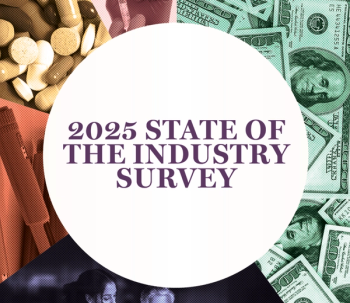
Healthcare quality, cost expert shares critical advice
A discussion with Thomas H. Lee, MD, chief medical officer, Press Ganey
Thomas H. Lee, MD, joined Press Ganey as chief medical officer in 2013. He has more than three decades of experience in healthcare performance improvement as a practicing physician, a leader in provider organizations, researcher and health policy expert.
At Press Ganey, Lee develops clinical and operational strategies to help providers measure and improve the patient experience and the value of care.
LeeLee, a practicing physician at Brigham and Women's Hospital in Boston, frequently lectures on the patient experience and strategies for improving the value of healthcare, and has authored more than 260 academic articles and three books.
In this Q&A with Managed Healthcare Executive (MHE), Lee shares advice and insight regarding what should now be a top priority at every healthcare system and health plan across the country: Improving quality and reducing care costs.
MHE: You've worked with several organizations to help them measure and improve quality while reducing costs. Of those organizations that have been the most successful, have you noticed any common characteristics?
TL: Probably the single most important feature has been willingness to use transparency with quality data-internal transparency, which produces accountability among colleagues; and external transparency, which causes clinicians to raise their game for every single patient.
Of course, it takes more than the intellectual understanding of the impact of transparency before an organization can take that step. There has to be trust within the organization that the leaders really are committed to better quality, and will not be using transparency to humiliate colleagues.
For example, many organizations have an appeals process, through which physicians can make the case that patient comments or data should not be posted for others to see. The goal, after all, is not to embarrass anyone; it is to better care for patients.
MHE: How would you characterize the industry's current ability to measure quality and cost in a productive way? What are some of the biggest challenges?
TL: Our ability to measure quality and cost is better than we think. We tend to point out the problems, and I think that is actually a form of resistance to change (if the data are flawed, then we can ignore them). The fact is that the data will always be flawed, but we have to act based upon what we have, because the imperative to improve is so urgent.
The data situation is much better today than a decade ago. We can use e-surveys to get data quickly and inexpensively from patients, and we also have much more clarity about which variables provide the most important insights into how patients' needs are being met. For example, Press Ganey's analyses show that patients are much more concerned about coordination of care, communication, and empathy than they are about waiting time and practice amenities.
The next big steps are standardizing outcomes measurement, really emphasizing outcomes over processes, and starting the hard work of measuring real costs.
MHE: Transitioning to value-based reimbursement is challenging for many physicians. How can healthcare leaders best engage them in redesigning care?
TL: The key step is to segment patients into groups with similar needs, and then organize real teams around meeting those needs. I don't think capitation accomplishes the goal of getting clinicians engaged in improving value. I think bundled payments for real teams around real groups of patients, that is what gets clinicians into being creative about how to improve outcomes and lower costs.
MHE: Our cover article this month focuses on to reduce readmissions. What is your #1 piece of advice in this area?
TL: My real advice is to focus on a goal that is more important than readmissions. That goal is maximizing patients' time at home. Patients love being at home, and we should be gearing our care around meeting this need rather than manipulating readmissions rates.
Now that said, I do think that the kind of measures that reduce readmissions also increase time spent at home--good coordination, good communication being most prominent.
MHE: In your latest book, "An Epidemic of Empathy in Healthcare," you write about how delivering empathic care can foster a competitive advantage for an organization. How so?
TL: The healthcare marketplace is moving toward one driven by competition on the value of care. That is, meeting patients' needs as efficiently as possible. To do that, we have to organize ourselves around patients' needs, and then we have to really meet them.
One of the most important of those needs is peace of mind that things are as good as they can be, given the cards that patients and their families have been dealt. And to do that, we need to help our clinicians focus on patients, grasp what is really important to patients, and convey that understanding to patients and their families.
This work is real work––emotional labor is the term that is being used more and more. In this book, I try to capture how healthcare organizations can do this work more reliably and more effectively by organizing to create “social capital” and by using social network science to spread empathy as a core value.
MHE: For health plans, member satisfaction is growing in importance because of the rise of healthcare consumerism. What lessons have you learned about improving patient satisfaction that might help health plans improve member satisfaction?
TL: Member experience is going to be increasingly important, as health plan insurance products are getting increasingly complex. Patients really function like consumers when it comes to picking health plans, and I expect that there is going to be competition on the simplicity of various products.
Can patients figure out what is on formulary? Can they figure out whether they can use certain doctors, and what it will cost them if they do stay with their current doctors? A lot of times, patients are saying they simply cannot figure these kinds of issues out. Health plans that understand and improve member experience are going to compete more successfully.
MHE: Efforts to improve quality and cost transparency are also gaining traction. What are some of the biggest impacts you believe this movement will have on payers and providers?
TL: Transparency to drive quality improvement is powerful, and the right type of incentive. It’s hard to imagine how financial incentives will ever be great drivers of improved quality. Quality should be a “look in the mirror” incentive. And transparency forces clinicians to give that long, hard look in the mirror with every patient.
On the other hand, I don’t know that cost/price transparency is going to be a powerful factor for greater value. There are data suggesting that it does not make prices go down, and could even make them go up. So I am much more sanguine about quality transparency than price transparency.
Aubrey Westgate is executive editor of Managed Healthcare Executive.
Newsletter
Get the latest industry news, event updates, and more from Managed healthcare Executive.





















































